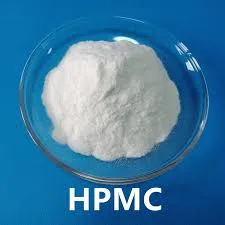
Jul . 30, 2024 15:03 Back to list
Exploring HPMC Applications and Benefits in Enhancing Putty Powder Performance and Consistency
Understanding the Role of HPMC in Putty Powder
In the construction and renovation industry, putty powder plays a crucial role in achieving a smooth and flawless finish on walls and surfaces. One of the key ingredients that enhance the performance of putty powder is Hydroxypropyl Methylcellulose (HPMC). HPMC is a cellulose ether that has been widely used due to its multi-functional properties such as water retention, adhesion, and improved workability.
What is HPMC?
HPMC, or Hydroxypropyl Methylcellulose, is a non-ionic polymer derived from cellulose, a natural polymer found in plant cell walls. Its chemical structure allows it to be soluble in water, forming a clear gel-like substance. This solubility is vital in various applications, particularly in the construction industry, where it serves as a thickening, binding, and stabilizing agent.
The Importance of HPMC in Putty Powder
In the formulation of putty powder, HPMC serves multiple essential functions that enhance the performance of the product
1. Water Retention One of the significant challenges in using putty powder is ensuring that it adheres well to walls and surfaces without drying out too quickly. HPMC possesses excellent water-retaining properties, which help keep the mixture workable for longer periods. This characteristic is particularly beneficial when applying putty in large areas or under conditions where ambient humidity is low.
hpmc for putty powder

2. Improved Workability The use of HPMC in putty formulations enhances the overall workability of the mix. It aids in providing a smooth and consistent texture, making it easier for applicators to spread the putty evenly on surfaces. This improved consistency minimizes the risk of lumps and uneven finishes, resulting in a more professional final appearance.
3. Increased Adhesion HPMC contributes to better adhesion of the putty to the substrate. The polymer creates a molecular bond that holds the putty securely to the surface, reducing the likelihood of peeling or cracking as the putty dries. This property is crucial for ensuring the longevity and durability of the putty application.
4. Versatility in Formulations One of the remarkable qualities of HPMC is its versatility. It can be combined with various additives and materials to develop customized putty formulations that cater to specific needs, such as enhanced flexibility, increased strength, or improved moisture resistance.
5. Eco-Friendly Characteristics HPMC is considered environmentally friendly, as it is derived from natural cellulose. Unlike some synthetic polymers, it does not release harmful emissions or volatile organic compounds (VOCs) into the environment. This makes HPMC-based putty powders a preferred choice for eco-conscious consumers and builders.
Conclusion
The use of HPMC in putty powder formulations offers numerous benefits that enhance the overall quality and performance of the product. Its ability to retain water, improve workability, and increase adhesion makes it an invaluable component in delivering a smooth and durable finish on surfaces.
As the construction industry continues to evolve, the demand for high-performance materials like putty powder will grow. The incorporation of HPMC not only meets this demand but also aligns with broader trends toward sustainability and environmental responsibility. As such, HPMC will likely remain a key ingredient in putty powder formulations, ensuring that builders and homeowners achieve the best results in their construction and renovation projects.
-
What Is HPMC: Meaning,Applications
NewsApr.02,2025
-
Redispersible Polymer Powder (Rdp): Uses, Price, And Suppliers
NewsApr.02,2025
-
Hydroxyethyl Cellulose (Hec): Uses, Suppliers, And Buying Guide
NewsApr.02,2025
-
Hpmc (Hydroxypropyl Methylcellulose): Applications, Suppliers, And Buying Guide
NewsApr.02,2025
-
Guide to Mortar Bonding Agent
NewsApr.02,2025
-
Buying Guide to Redispersible Powder
NewsApr.02,2025







